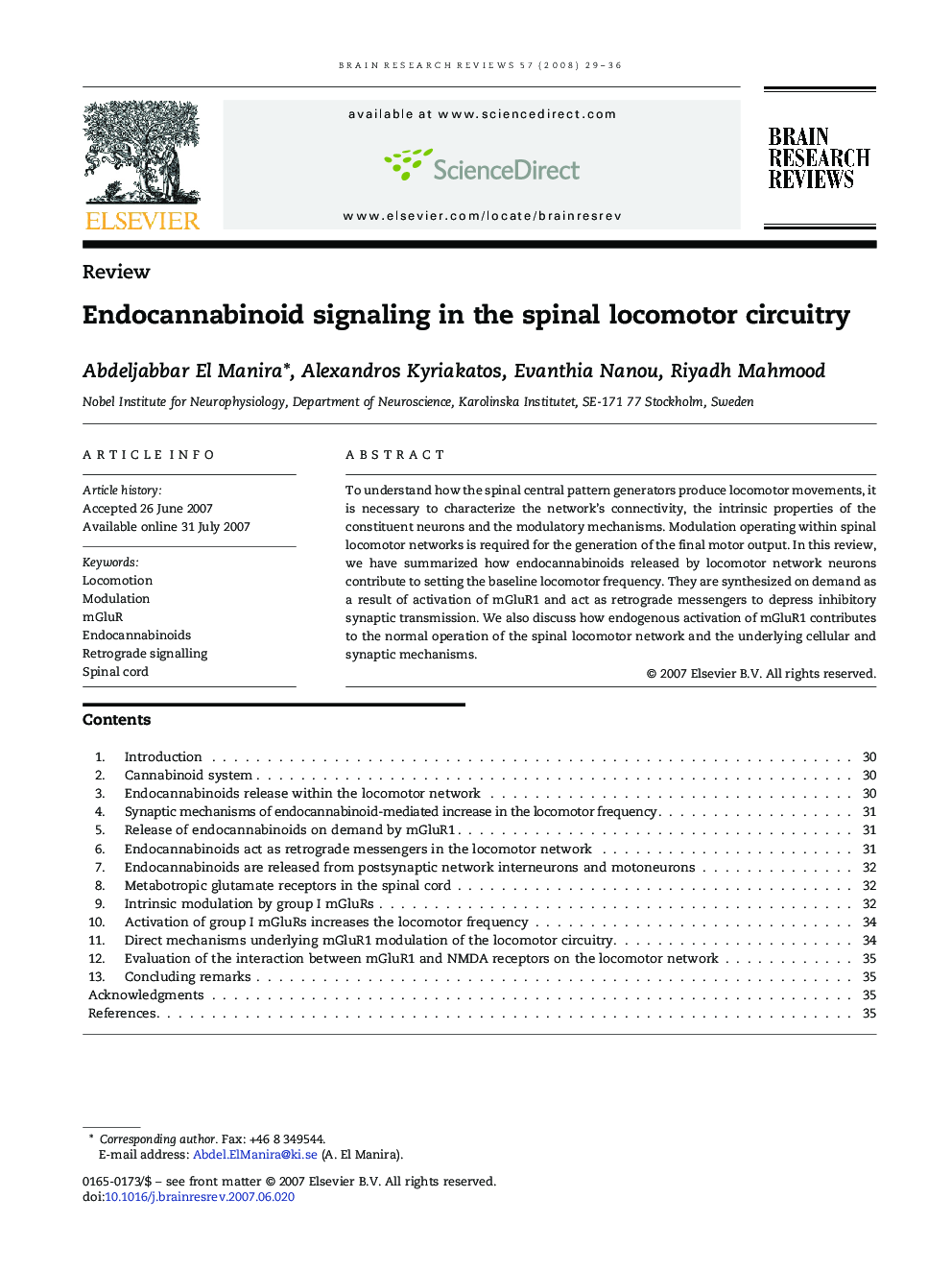| Article ID | Journal | Published Year | Pages | File Type |
|---|---|---|---|---|
| 4333914 | Brain Research Reviews | 2008 | 8 Pages |
Abstract
To understand how the spinal central pattern generators produce locomotor movements, it is necessary to characterize the network's connectivity, the intrinsic properties of the constituent neurons and the modulatory mechanisms. Modulation operating within spinal locomotor networks is required for the generation of the final motor output. In this review, we have summarized how endocannabinoids released by locomotor network neurons contribute to setting the baseline locomotor frequency. They are synthesized on demand as a result of activation of mGluR1 and act as retrograde messengers to depress inhibitory synaptic transmission. We also discuss how endogenous activation of mGluR1 contributes to the normal operation of the spinal locomotor network and the underlying cellular and synaptic mechanisms.
Related Topics
Life Sciences
Neuroscience
Neuroscience (General)
Authors
Abdeljabbar El Manira, Alexandros Kyriakatos, Evanthia Nanou, Riyadh Mahmood,
